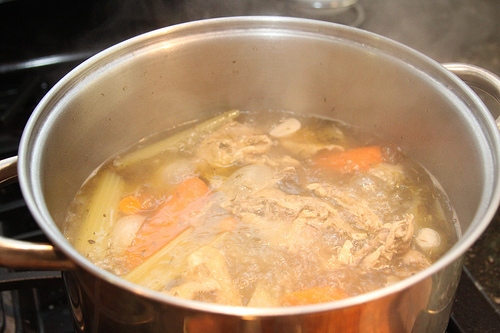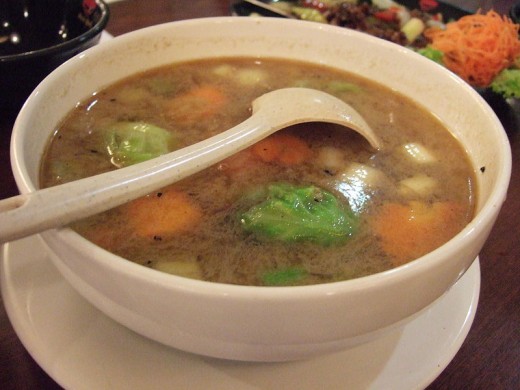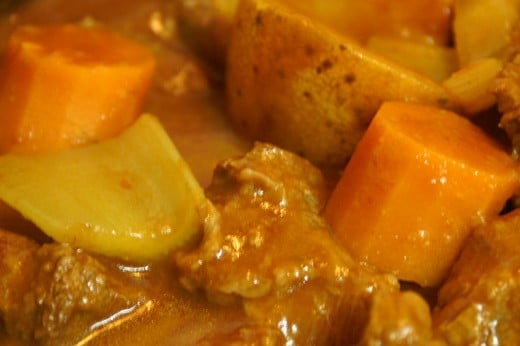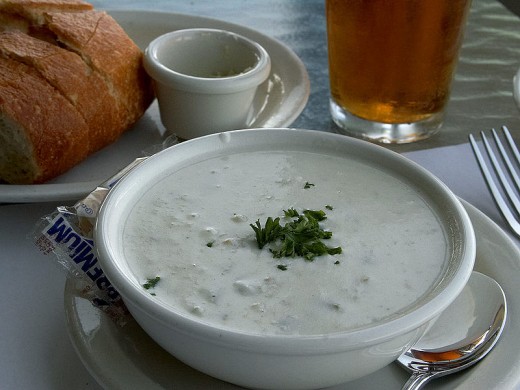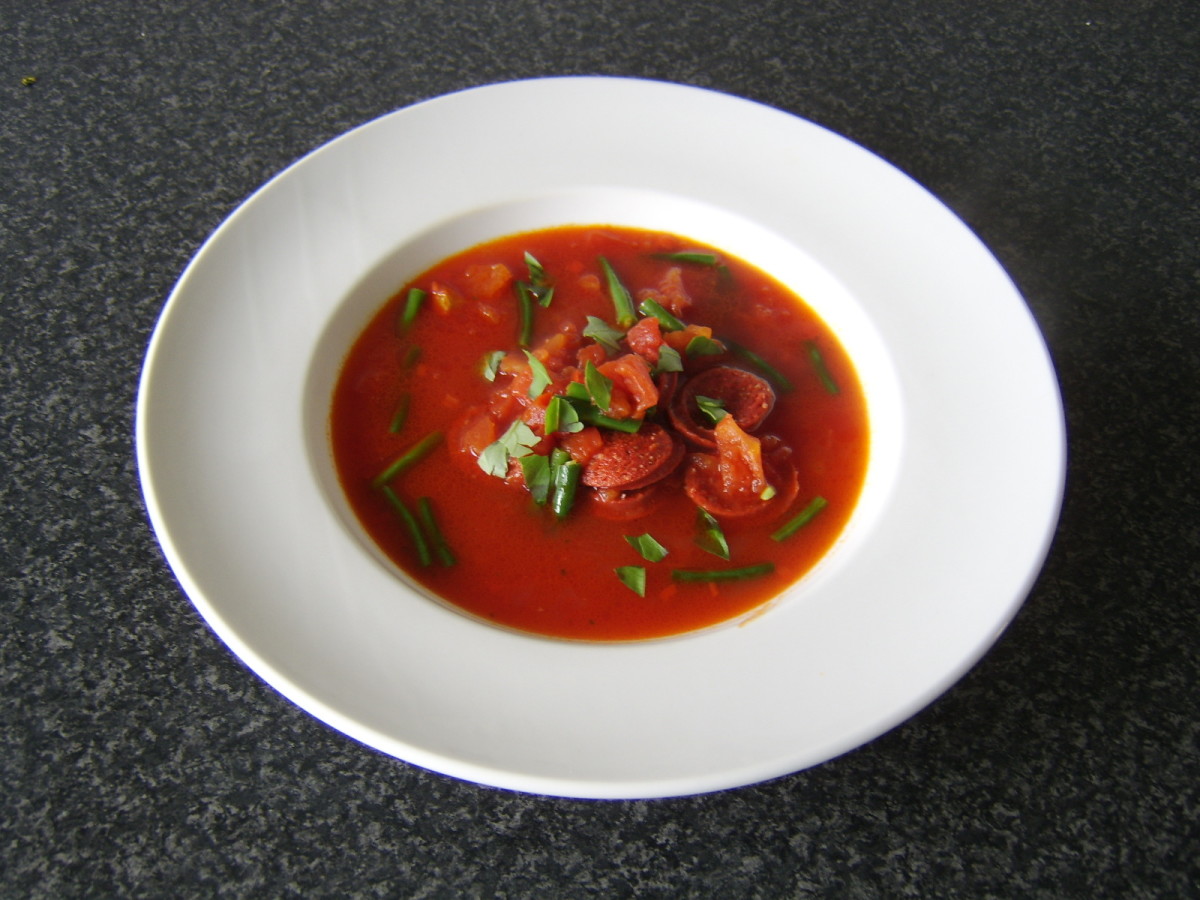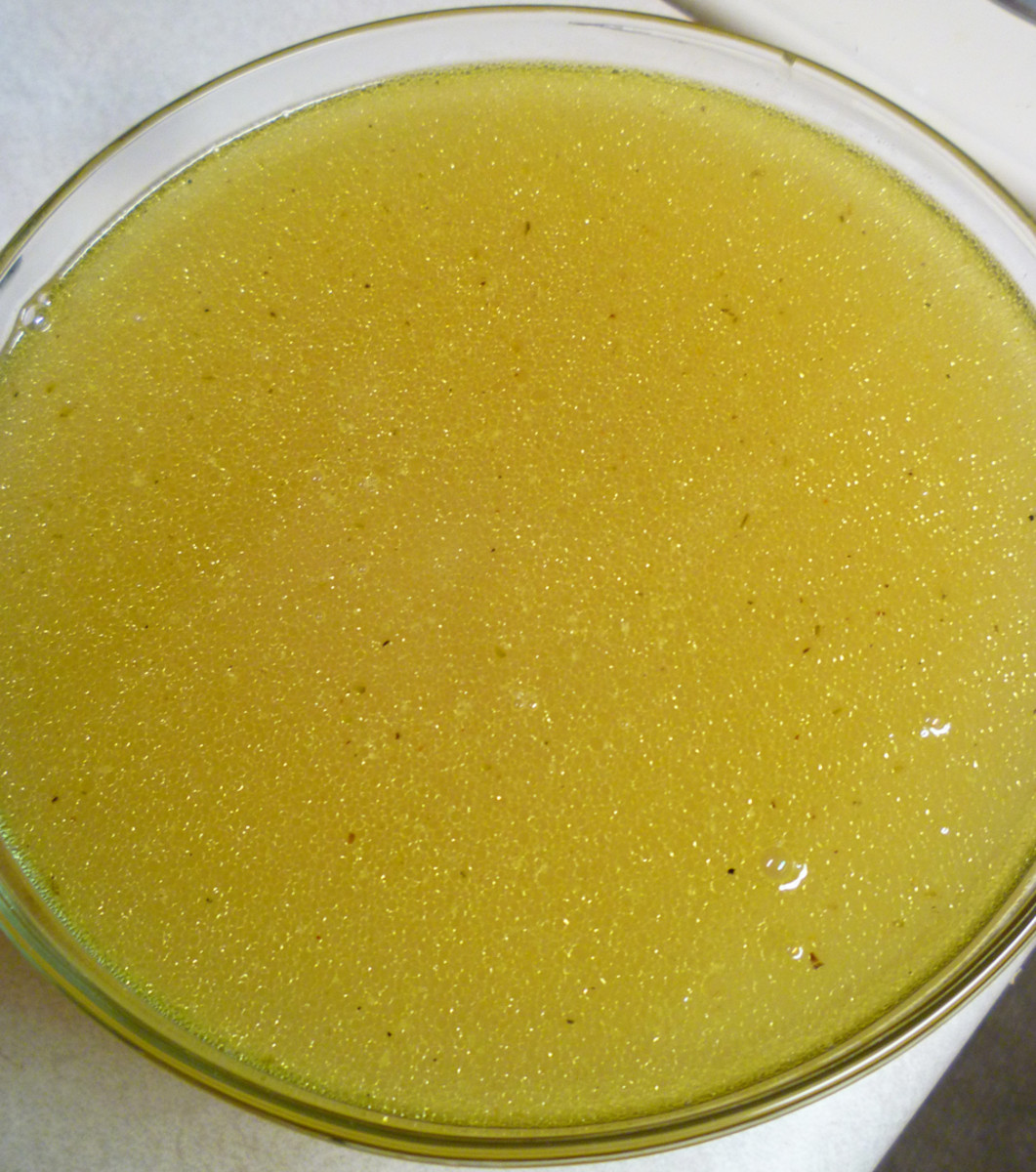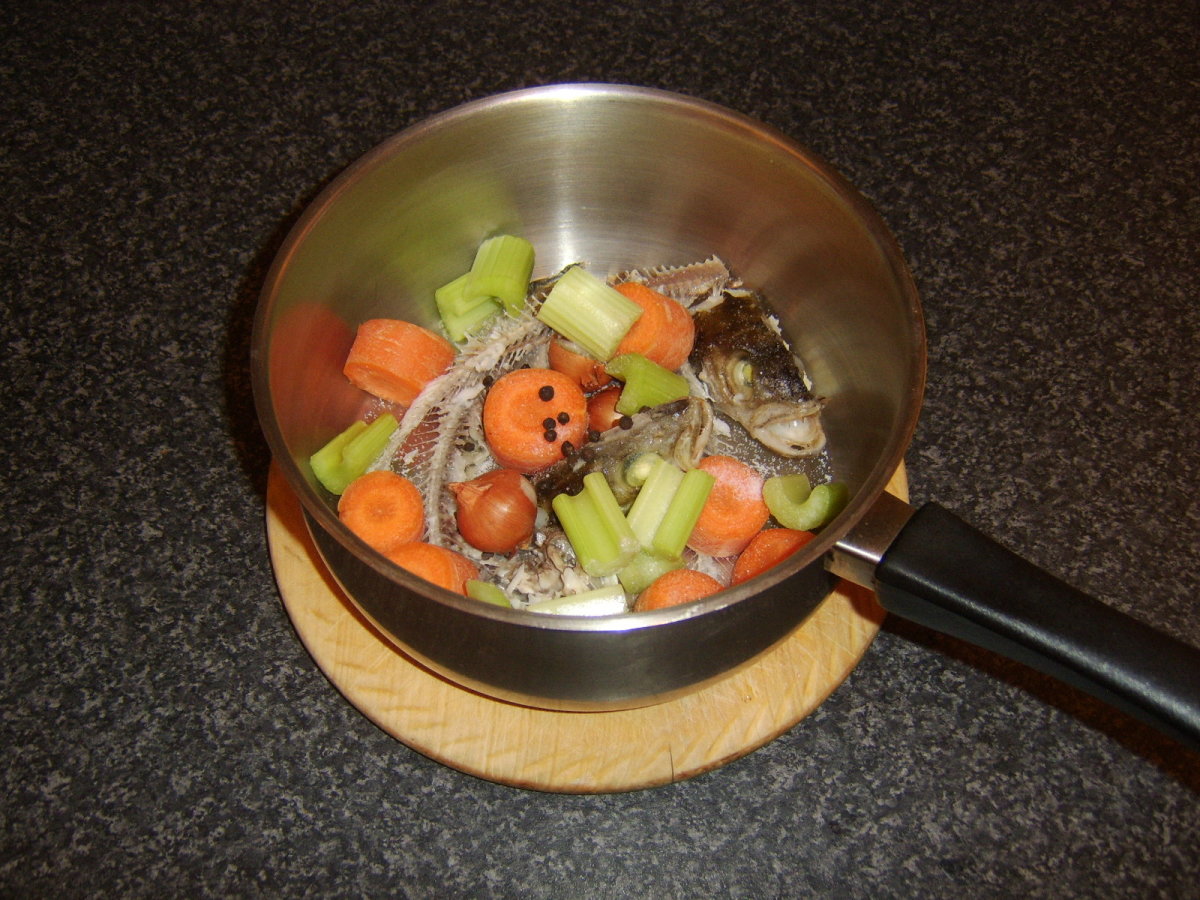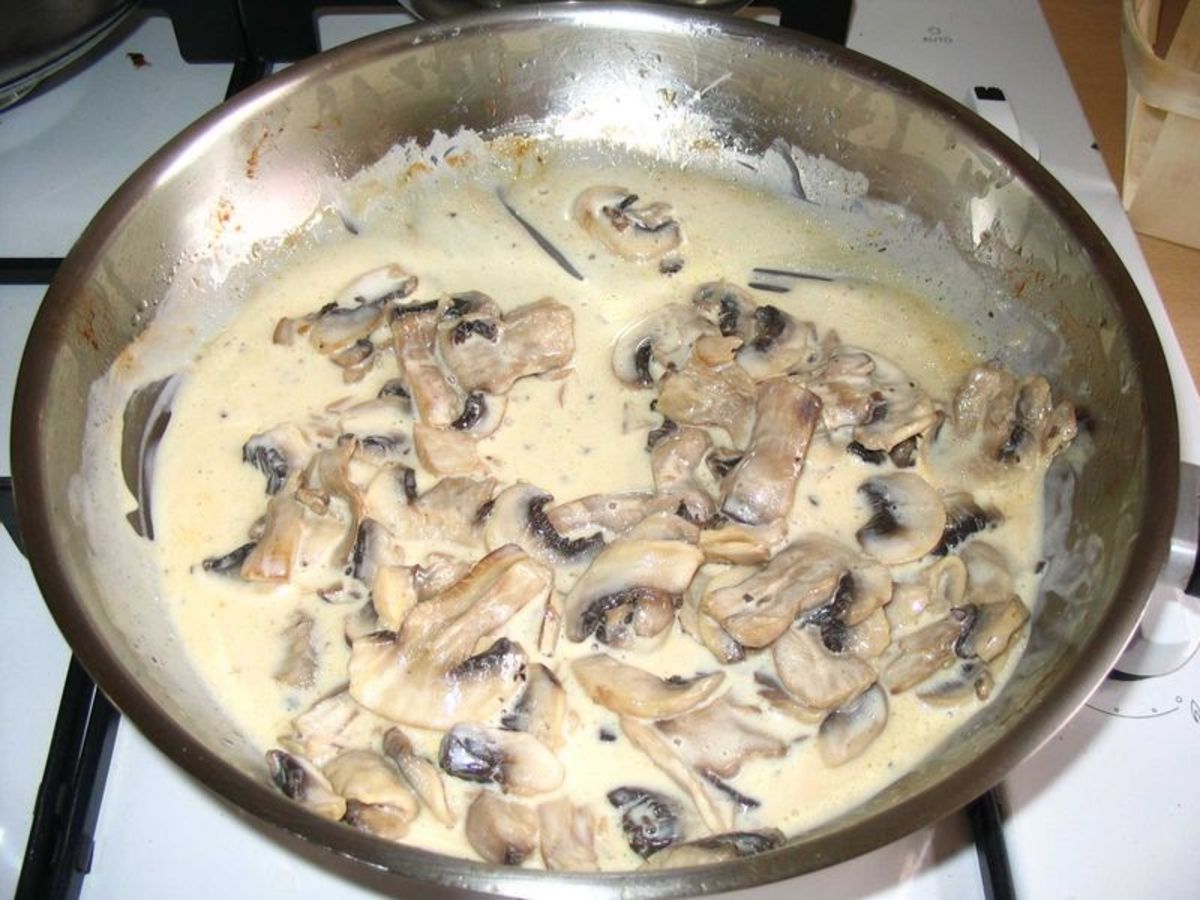How to Make Stocks, Soups, Stews and Chowders
Culinary Basics - Stocks, Soups, Stews and Chowders
When you think about cooking techniques, it can be a puzzle trying to figure out what's the difference between stocks, soups, stews, and chowders. Culinary basics let's us explore various preparation methods that delineate one of the above from the other.
Knowing how to prepare each of the four types of soups and stock is really very easily perfected and the techniques can be employed across the board - for fish, for meat, and for poultry - even vegetables for those of us who are vegetarian.




Photo Credit: Flickr Gudlyf
Photo Credit: WikiCommons Midori
Photo Credit: Public Domain Photo
Photo Credit: Public Domain Photo
Culinary Basics - Making Stock
Basically, stock is the culinary art of making broth. It is as simple as that.
Generally speaking, you can use about any parts of chicken, fish, meat, or vegetables or a combination of the above to start out your stock.
Your equipment consists of a large stock pot, utensils and perhaps cheesecloth if you wished to tie up your herbs.
In the case of making chicken stock, you can take the carcass from a roasted chicken or chicken parts such as necks, legs, or wings. You can even use a whole stewing chicken that has been washed and dried.
You add peeled cut up or whole vegetables such as celery, carrots, kale, spinach, etc.
Also add to the pot chopped onion and garlic. Add some herbs - fresh or dried. Add pepper to taste.
It is not recommended to add salt because after you have created your stock or broth, you will salt the foods that you add it to.
You might even add in some white wine or some Marsala wine if you wanted to flavor your stock a bit.
Cover with an ample amount of water - and bring to a boil. Once at a nice boil, you may cover and cook gently at a simmer or you can leave uncovered and keep at a simmer.
The cooking technique for making stock of any kind is to boil all the ingredients to flavor your water and thus make a broth. This broth has to then boil down or reduce to bring out the flavor of the chicken and the vegetables.
Some people boil their stock and then scoop out the ingredients and do it all over again, adding more water and more vegetables so that you have made a very concentrated form of the stock.
When you feel that your stock has reached its peak flavor, remove chicken and skim off any debris. Remove the vegetables and strain the broth/stock if you want a clear version. Use the chicken in other recipes or for chicken salad. Puree the vegetables and onion and add to a soup to add further flavor or thicken a soup or stew with it.
If you let it sit out and fat rises to the top and gels, simply remove the fat - you now have a fat-free version of your stock!
Culinary Basics - How to Make Chicken Stock
Culinary Basics - How to Make Chicken Soup
Use your stock (or use water and bouillon) and add vegetables to it to make a chicken soup.
You can sauté onions and garlic in a smidgen of olive oil. I usually saute these and then add raw chopped chicken breast or chopped thigh meat to the saute, cooking a few minuets to brown them. I might add in some leafy beet greens or kale if I want to sauté those a bit as well. Then I add all of onion, garlic, green leafies and chicken to the soup pot.
Chicken Noodle Soup is merely an extension of the stock you made (or use store bought broth). Added are peeled and sliced carrots, celery, peas, kale or spinach or add whatever vegetables you are fond of in chicken soup.
Add herbs to taste and salt and pepper to taste. You can also add a bit of Marsala wine or other white wine to your chicken soup to give it added flavor.
Add extra water and cook until the chicken is tender but not tough.
You can also add noodles, either prepared separately or added to the chicken soup when it is almost done cooking.
I use yolkless noodles and cook them in a separate pan, drain and then add at the very last minute so as not to overcook them.
Adding rice to chicken soup is also a great way to round off your soup. Or in a pinch, I've used partially cooked risotto and it was delicious. Wild rice is also a delicious addition.
I have also used spaghetti noodles broken into halves or thirds and it makes a delicious soup!
The basics of soup is that is has a lot of broth and chopped vegetables. It can also have noodles or rice but its main feature is the broth or stock.
Culinary Basics - How to Make Chicken Soup in the Crock Pot
Culinary Basics - How to Make Chicken Stew
There really is not that much difference between a soup and a stew in my opinion except that I think a stew is somehow 'heartier' and 'stouter'.
For instance, I would not add dumplings to my chicken soup since it already has noodles or rice in it. However, a nice chicken stew is just crying out 'add dumplings, darling - you little dumpling!'
For my chicken stews, I brown my chicken pieces such as thighs or legs - skin on or skin off - in olive oil. I also brown my onion and garlic.
I then add some of my homemade stock and add anything else I can think of in terms of wine or Marsala and herbs.
For my stews, I tend to leave the pieces pretty good sized and use a bigger pot. I also like to chunk the vegetables rather than slice them thinly up so they appear to be in proportion to the chunkier version of a soup.
I use things in stews like carrots. I might throw in some celery largely chunked. I might also add some parsnips or turnips because they go really well in stews. I might even also chunk in some sweet potato or regular red potatoes with the skin on.
I also like to use green beans or peas in my stews. Zucchini or summer squash is also a delicious addition. Yams or butternut squash in winter months also work well.
For a stew, I let it thicken up a bit. I simmer and add more broth or water and keep cooking gently until the chicken is cooked through along with the veggies. The sauce usually thickens up but if it's not thick enough, I may add a little flour/water mix to help it along or one of the natural thickeners.
I prepare stews a lot on cold, dark wintry days or in autumn when the temps dip and I either add dumplings dropped on the top of the stew and covered to cook or I whip up a batch of buttermilk biscuits for dipping.
Stews in my opinion are 'soups on steroids' or a thicker, heartier version of a soup - similar but unique because of the various added ingredients.
Culinary Basics - How to Make Beef Stew
Culinary Basics - How to Make Chicken and Corn Chowder
A chowder is different from all the above because it is usually a milk-based soup or a cream-based soup but sometimes tomato-based, etc. as in the case of Manhattan clam chowder. However, many of the ingredients are the same for different chowders.
Starting out to make a chowder, I generally brown a few slices of bacon and then use the drippings to sauté some onion and garlic.
I then add some chopped chicken breast or thigh meat and brown. I set these aside.
Then I add flour to the drippings or add a little olive oil and make a roux that will thicken the soup as it cooks. I then add milk, seasonings, and even some stock.
I might even throw in a bit of wine to give added flavor. In the case of chicken and corn chowder, I add a can of creamed corn to the milk mixture.
I then add the chicken to all the above, the onion and garlic, add some sliced or diced raw red potato with the skin on, celery and some whole kernel corn.
A chowder is the really, really thick and beefed up version of stew. A chowder makes an excellent candidate for a bread bowl because of its denseness.
Culinary Basics - How to Make Corn Chowder
How to Make Stock, Soups, Stews, and Chowders
- Veal Stew
My version of veal stew is a bit different because first of all, I don't use a tomato base of any kind and secondly, I discovered a little tweak that I thought added a certain sweetness to the stew that I... - Lentil Stew Recipes: Easy, Healthy, & Hearty
When the cold weather hits, I tend to make lentils at least once a week for dinner. Here are a few of the many benefits of lentils: Each 1/2 cup contains 5-6 grams of fiber. Servings are high in protein and... - How to Make Stock Part Two - Beef Stock
The art of making stock is a very underrated and marginalised kitchen skill, but it's the key to some truly wonderful cooking, it's not at all hard, and it's an incredibly studly thing to be able to make. I've... - Easy New England Clam Chowder
Chowder is another form of soup that is really in my opinion like a stew as it usually has large chunks of vegetables and meat in it. Traditional New England clam chowder is a lovely combination of carrots,... - Easy Manhattan Style Clam Chowder
Manhattan clam chowder is the counterpart to New England clam chowder and the main difference is that while New England chowder is a milk based chowder, Manhattan is a tomato based chowder. I love them both... - Molly Malone's Magic Irish Soups
Soups of several kinds make up part of traditional Irish cuisine and are very tasty. They include natural ingredients, sustainable resources, native vegetables and seafood, and some interesting... - Lose Weight With A Vegetarian Diet - Vegetarian Soup...
A vegetarian diet is one of the smartest weight loss strategies. It won't work fast like magic but will help you lose weight a healthy way. Here are some easy and hearty vegetarian soup recipes I hope you will enjoy. - Leftover Ham Recipes-Cheese Soup, Ham Chowder, Lenti...
Here are three simple recipes for using that leftover hambone. They are a bit different than the regular bean soups and I'm sure you'll find them a great addition to your leftover ham recipe box! Broccoli... - Easy Recipe For The Best New England Clam Chowder
Learn how to make the best New England Clam Chowder with this fast and easy Clam Chowder Recipe! Ready in about 45 minutes!
Summing It Up
As you can see, there are many similarities in all these cooking techniques and even in their respective ingredients, though each one is unique in its own way.
By applying these cooking techniques and culinary basics, you can improvise all of these techniques to make fish stock, beef stock, even vegetable stock.
You can use the same techniques for chicken soup to make beef noodle soup, vegetable soup, or even a minestrone. Fish soups are wonderful and there are many varieties - especially Asian clear soups.
Stews are very versatile as well and of course you can make a hearty fish stew, a magnificent burgundy beef stew or a Brunswick stew. Vegetable or lentil stews are also delicious; some have added beans or ears of corn. Some stews have rice added.
For chowders, the sky's the limit here as well. Nothing like Manhattan or New England clam chowder but corn chowders are one of my favorites. You will also find lots of recipes for cheese chowders that are wonderful. The most important thing about chowders to remember is not to boil or cook at a temperature that is too high - it will cause the milk or cream to separate.
Whatever you're making though, if the ingredients are fresh and the product is homemade, you can't do anything but win on all accounts!

